#duffins creek
Text
Lack of Integrity and Substantial Harm to the Greenbelt & Ontario in General Under Doug Ford's Leadership
Nauseated by the Auditor's Report today. Don't know how naive it is to not expect this level of corruption in Canada.
So many issues. Where do we begin? & the fact that Premier Ford doubles down on what they did after promising that he wouldn't touch the Greenbelt?
*Most headlines misreport the amount that his developer buddies are set to gain. The 8.3 billion figure is completely off. If you check the report, you'll see it's based on lower assessment values from Jan 1st, 2016. Bonnie Lysyk clearly mentions that such greenbelt lands are actually selling for about 4x that amount, ie. 33 billion dollars ++.
*What even happened to the Greenbelt Council? Reports show members were muzzled and essentially forced to resign. Then when the chair eventually resigned too, nearly 102 year old frail & ailing Hazel McCallion aka "queen of sprawl" was appointed. On January 18th this year, the day Bonnie Lysyk announced her audit, Hazel also released an open letter in support of Ford's move & died a week and a half later. More than half the council remains vacant to date. The Greenbelt Council was essentially shut down.
*Political staff who were in charge of making changes to the greenbelt literally COPIED, PASTED & FORWARDED what the developers' lobbyists sent them to Deputy Ministers to include as legislative packages. THAT's how legislation works in Ontario? -- No surprise why the Ministry of Public & Business Service Delivery is currently working to legislate new home purchase agreements' price increases as well as cancellations (to then hike prices up). More C&P from builders? -- Political staff used personal emails, regularly deleted them and didn't keep proper descriptions of their meetings with developers' lobbyists and other external parties.
*At a BILD dinner last Sept 14th, the Housing Minister Chief of Staff supposedly received 2 packages from 2 developers. 1 of them, Rice Group, closed on a 80M dollar land deal the very next day. The other, TACC (aka Aspen Ridge, Opus, Arista Homes, etc) owns the majority of DRAP (Duffins Rouge Agricultural Preserve) and received a whopping 58% of the lands Doug Ford removed from the Greenland. Fieldgate Homes received 24% and Rice Group, 9%.
*Ford has hung out with the DeGasperis (TACC) family since at least 2018 when he was seen in their luxury box at the BB&T Centre in Miami. Notably, back in 2006, Silvio DeGasperis told the Toronto Star "McGuinty has already hurt me, I'm going to hurt him." At the time, he pushed to stop Greenbelt plans, tried to develop their Pickering lands anyway and eventually took Ontario to court but lost. Now, the family is set to make the most out of the $33 billion dollar greenbelt gifts from Ford.
*Bonnie Lysyk pointed out that Ford & co did not consider the potential financial gain or how the province could share in the 33 -not 8 - billion dollar gain. Curious to know what angle a conservative MPP or Ford supporter could justify this and not backtracking on it. Deflect and blame past Liberals or whoever till our ears fall off/eyes bleed, sure, but how does anyone support or justify these actions? This isn't bipartisan, it's a partial-to-the DeGasperis' & a handful of other developers issue. These greenbelt changes must be reversed, for the province to share in these substantial profits, if nothing else.
Watched Doug Ford respond live today as he struggled to form the prompted sentences. Apparently didn't know what to say. Later Steve Clark adorably quipped in to cover Qs directed to our, or rather the DeGasperis' premier.
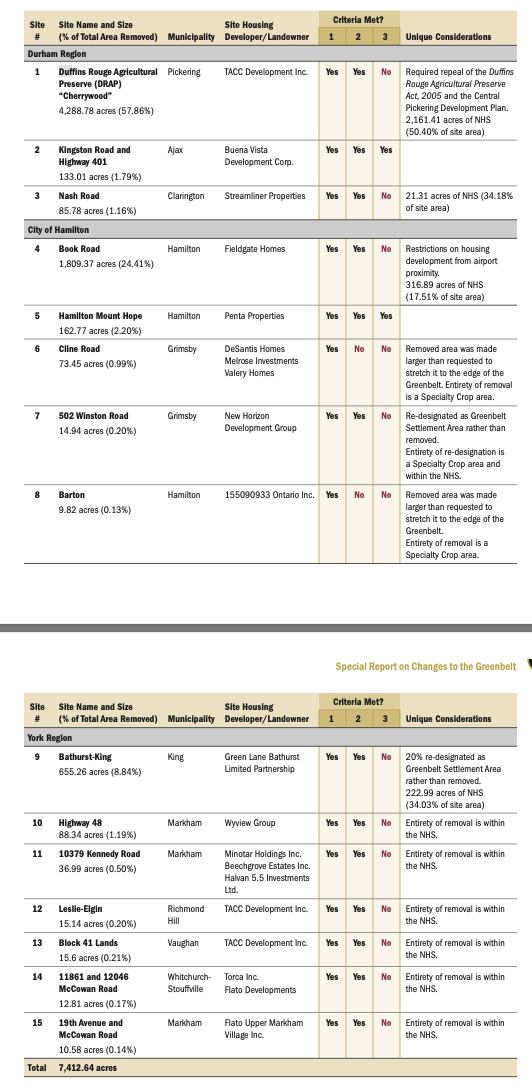




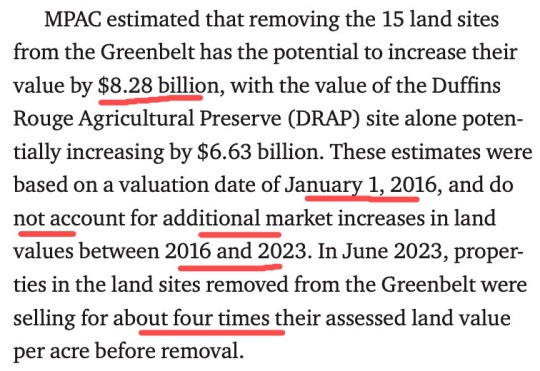













#Doug ford#premier ford#ford nation#ontario#greenbelt#degasperis#silvio degasperis#greenbelt scandal#greenbelt council#Steve clark#canada#8.3 billion#pickering#duffins creek#rouge park#bonnie lysyk#ontario auditor
1 note
·
View note
Text


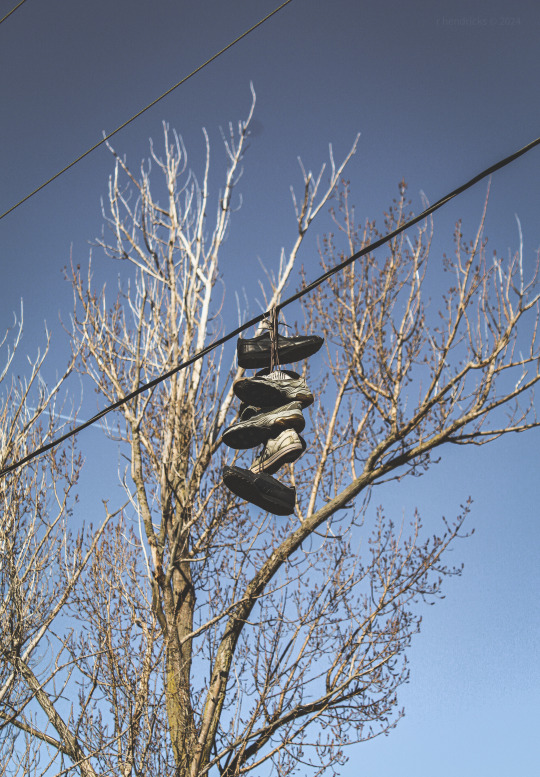


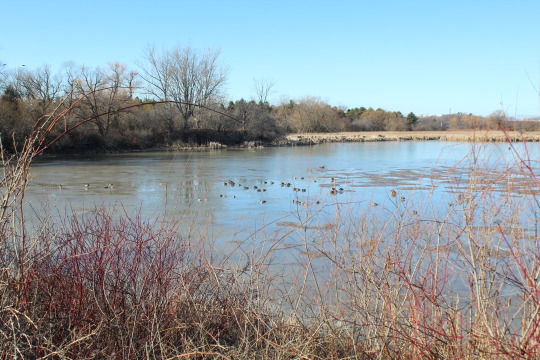

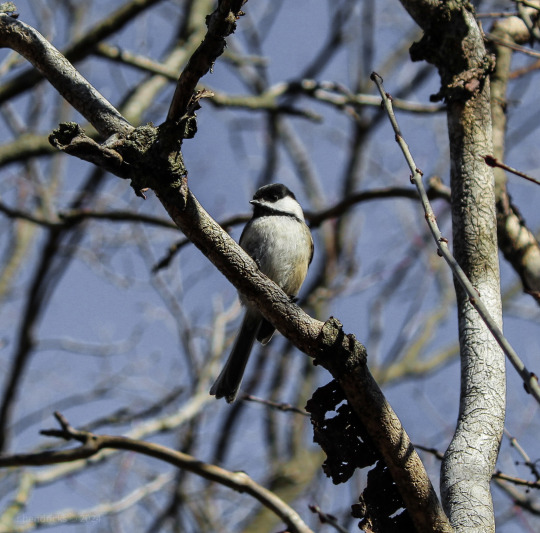





Duffin's Creekmouth, Feb 2024
#hiking#ontario#duffin's creek#great lakes#lake ontario#watershed#canon canada#original photography#eosr6#sunny skies#canon photography
0 notes
Text
A brand-new, upscale waterfront development called Lake Pointe Condos and Towns is coming to the Discovery Bay neighbourhood of Ajax. Due to the presence of Lake Ontario and Duffin’s Creek, two of Durham Region’s most gorgeous waterways, this portion of the city is well regarded for being among its most picturesque sections. Residents will have access to the best that the city has to offer thanks to this prestigious waterfront address. Discover expansive beachfront access, beautiful trails, and the convenience of being close to services in a big city.
More Info: www.preconstruction.info/project/lake-pointe-condos/
Register on our website or Contact +1 647-945-8844
#lakepointe #condo #condominium #ajax #condos #ajaxcondo #preconstruction #realestate #propertyforsale #newdevelopment
0 notes
Text
"Headwaters"
“Headwaters”
“Beginning as a trickle from deep in the earth and combining with other small trickles, the creek forms and grows in the dark recesses of the forest” – Ed Lehming
Here is another ‘re-imagined’ image of a scene I have tried countless time to do justice too. It’s the headwaters of Duffins Creek, a local creek that flows from the Oak Ridges Moraine to Lake Ontario. I have spent many years hiking…
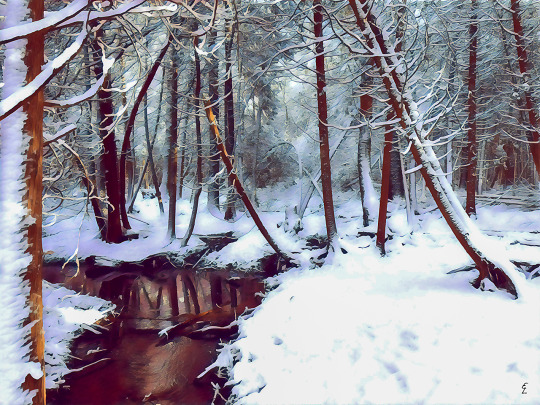
View On WordPress
1 note
·
View note
Photo
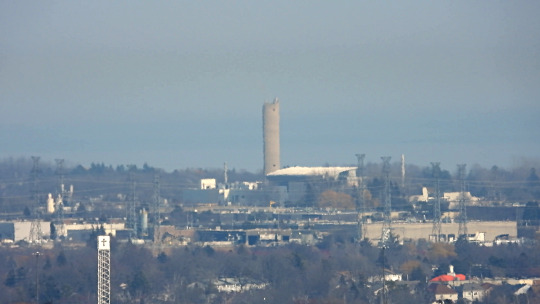


Duffin Creek Water Pollution Control Plant
The Regional Municipalities of York and Durham jointly own the Duffin Creek Water Pollution Control Plant, located on the shore of Lake Ontario in the City of Pickering, Ontario.
0 notes
Link
The Ford government is proposing a retroactive change to provincial law to clear the way for a controversial development project on a protected wetland.
The change in legislation was tabled by the government Thursday as part of an unrelated bill about expanding broadband internet in rural areas.
The amendments to Ontario's Planning Act would nullify a key clause that limits the scope of ministerial zoning orders (MZOs), a powerful tool that helps fast-track developments by overriding local zoning rules.
CBC News has obtained an internal document that shows the government is making the change specifically to to bolster its case against a lawsuit that aims to halt a development on the Lower Duffins Creek wetland in Pickering.
Continue Reading.
Tagging: @politicsofcanada @onpoli
#Doug Ford#Wetlands#Ontario#Environment#cdnpoli#canada#canadian politics#canadian news#canadian#Pickering
423 notes
·
View notes
Link
Environmental groups are taking the Ontario government to court over its unlawful use of a Ministerial Zoning Order (MZO) to force through development on the provincially significant Duffins Creek wetlands complex.
Ecojustice, on behalf of Environmental Defence and Ontario Nature, filed the legal application to maintain protections on this special area, which the Ministry of Housing and Municipal Affairs has approved as the future site of a warehouse facility.
Provincially Significant Coastal Wetlands, such as the Lower Duffins Creek complex, are of huge importance to local communities, helping to mitigate flooding, store carbon, filter water and provide habitat to wildlife.
MZOs are meant to be an extraordinary measure. In the past, they were rarely used and were reserved for exceptional circumstances. But in this year alone, the Ontario government has issued over 30 MZOs to fast-track development.
The legal challenge seeks to have the MZO quashed and declared unlawful for failing to comply with provincial law and policy. The 2020 Provincial Policy Statement under the Planning Act clearly does not permit development on provincially significant wetlands. Yet, the Minister ignored this prohibition and issued the MZO, thereby allowing development to take place in an otherwise protected wetland.
The proposed development at Lower Duffins Creek faces considerable opposition from several groups, and thousands of citizens. The Williams Treaties First Nations were not consulted and have voiced concerns. The Toronto and Region Conservation Authority has also rejected development in protected wetlands.
In spite of this, the Ontario government continues to push MZOs through and has even proposed amendments to the Conservation Authorities Act to strip conservation authorities of their powers.
73 notes
·
View notes
Text
Great Lakes Moment: River otters return to western Lake Erie
Most people know river otters from zoos or YouTube videos as endearing playful creatures that can put a smile on anyone’s face.
The river otter, once common throughout much of North America, was first reduced by trapping and then displaced from many areas by loss of habitat from urbanization and pollution. But sightings along western Lake Erie at Ottawa National Wildlife Refuge in Ohio and Point Pelee National Park in Leamington, Ontario, and evidence of a return of river otter to Toronto Harbour, raise the prospects that they just might return one day to the Detroit River too.
The river otter makes its home near the water. They live in a den by the edge of a lake, stream, or marsh. One fun fact is that River Otters don’t dig their own dens, they either use a natural hollow or burrow made by another animal. Otter dens feature numerous tunnels with easy access to water, especially for night hunting for fish, amphibians, crayfish and other aquatic delicacies. They can even close their nostrils to keep water out during long dives and stay underwater for up to 8 minutes.

Trail cam photo of a river otter from the Toronto and region watershed. (Photo credit: Toronto Region Conservation Authority).
Historically, river otters were present throughout most of North America, including southeast Michigan and southwest Ontario. One Monroe County, Michigan, creek is even named Otter Creek, a testament to how common they were during the late 1700s. However, that all changed during the Fur Trade Era when river otters were harvested in large numbers for their valuable water-resistant pelts. While hunting and trapping reduced otter numbers in Michigan, Ontario and Ohio, urbanization and water pollution proved to be the final blows. By the early 1900s these semi-aquatic mammals were gone.
In 1986, the Ohio Department of Natural Resources began a 7-year project to reintroduce river otters to areas with clean water and abundant food supply. More than 100 River Otters were captured in Arkansas and Louisiana, where they were still common, and transported to eastern Ohio. They were then released in the Grand River (a tributary of the central basin of Lake Erie) and Killbuck Creek, Little Muskingum River and Stillwater Creek, which flow into rivers that are part of the Mississippi River watershed.
By all accounts the river otter has not only survived but thrived in these watersheds. Monitoring has shown slow but steady growth of the population, and in 2002 it was even removed from Ohio’s list of state endangered species. But as the river otter population grew, individual otters began to adventure out to new watersheds – what scientists call expanding their range.
Some of the adventurous otters have now found a home in western Ohio. River otter sightings have occurred annually for more than 10 years from Cedar Point south to Darby, Ohio, near Columbus. Along the southern shore of western Lake Erie, not only have they been seen in Cedar Point, but Ottawa National Wildlife Refuge located just 15 miles east of Toledo, Magee Marsh Wildlife Area and the Toussaint River. Ottawa National Wildlife Refuge manages 6,500 acres of wetlands, grasslands and woodlands for protection of a wide diversity of waterfowl and other migratory birds, resident wildlife, and threatened and endangered species. Refuge biologists and volunteers have confirmed that they are now reproducing in refuge. What a thrill for conservationists and nature lovers to see them frolicking in the waters of western Lake Erie after an 80-year absence.
In March 2019, a naturalist discovered a set of tracks in the snow at Point Pelee National Park in Leamington, Ontario, on the northern shore of western Lake Erie. The tracks were discovered near the DeLaurier Canal and immediately they knew that they were not the mink tracks often seen in the park. There was a set of mink tracks nearby for comparison, which were much smaller, narrower and of course did not have the “slide” marks characteristic of otters.

Suspected river otter tracks at DeLaurier Canal, 2019. (Photo courtesy of Point Pelee National Park.)
Then in June 2019, two Parks Canada team members were in a boat entering the channel to West Cranberry Pond in the park marsh when an otter swam very close to their boat before diving underneath. Within a couple of weeks of that sighting, another team member working at the marsh boardwalk saw an otter swimming in the open water just to the left of the marsh tower. You can imagine how exciting it would be for a naturalist to see the return of river otters to this revered national park for the first time since it was established in 1918.
Situated on the northern shore of Lake Ontario is Toronto – Canada’s largest city and a key hub of the nation’s commercial, financial, industrial and cultural life. It has long been recognized as a pollution hotspot. In 1985 the International Joint Commission identified Toronto and region as a Great Lakes pollution hotspot and area of concern. Since then, substantial cleanup of pollution and habitat restoration have occurred, resulting in a surprising ecological revival.
More than $80 million alone have been invested in habitat restoration in Toronto and region since 1987. One exciting wetland restoration project has been Corner Marsh at Duffins Creek. For decades it had been in a degraded state, and over 10 years ago it was restored to the point where wetland vegetation, nesting birds and amphibians were flourishing again. Corner Marsh now has the highest population density of muskrats on the north shore of Lake Ontario, which attracted river otters to the area. River otters then spread from Duffins Creek and now occupy the entire Toronto waterfront. It has been over a hundred years since river otters freely inhabited the Toronto waterfront.
Knowing that river otters have returned to the once heavily polluted Toronto Harbour, that they have been successfully reintroduced into eastern Ohio, and that they have now been seen along western Lake Erie in Point Pelee National Park, Ottawa National Wildlife Refuge and other locations, is it possible that they just might return one day to the Detroit River?
I say yes.
Skeptics might say no. But we must all remember that as recently as 1985 there were no bald eagles, peregrine falcons, or osprey reproducing in the Detroit River watershed because of eggshell thinning caused by pesticides like DDT, no lake sturgeon or lake whitefish were reproducing in the Detroit River, and beavers had long disappeared.
Today they are all back. Wouldn’t it be wonderful if we had one more ecological surprise?
Check out the Detroit Zoo’s live otter cam HERE.
(source: Great Lakes Now)
By John Hartig, Published May 4, 2020
Great Lakes Moment is a monthly column written by Great Lakes Now Contributor John Hartig. Publishing the author’s views and assertions does not represent endorsement by Great Lakes Now or Detroit Public Television.
5 notes
·
View notes
Text
Happy Bat Week!

Big Brown Bat. Photo credit: Toronto Zoo.
From October 24 to 31 we’re celebrating Bat Week! A week to celebrate an amazing, often misrepresented animal that is vital to the health of our environment and economy.
Scarborough, like the rest of Toronto, is home to several bats despite its high urbanization. In fact, research suggests that Scarborough is home to at least seven out of eight of Ontario’s bat species!
Why is it important to raise awareness about bats?
Ontario’s native bats are on the decline. Of the eight species of bats found in Ontario, four have been listed as endangered as of 2012. Bats play an important role in maintaining the balance in ecosystems by controlling insect populations, pollinating flowers and crops, and spreading seeds that grow new plants and trees. By consuming large quantities of bugs, bats also benefit nearby farmers by decreasing the need for pesticide use.
Bats in decline
There are several reasons why the bat population is in decline. Loss of habitat, including deforestation and mine closures have dramatically reduced the populations of bats. Many bats also succumb to a condition known as white-nose syndrome, a deadly fungus that damages wing and skin tissue. Use of pesticides passed on from affected insects can also cause illness and be passed on to infant bats through nursing.

Bats with white nose syndrome. Photo credit: Toronto Zoo.
Five of Ontario’s eight bat species are non-migratory, which means they spend their winters in Ontario hibernating in caves or mines!
Hibernating bats are considered especially vulnerable, since any disruption (e.g., from noise or light) will cause them to wake up and use up some of their fat reserves meant to sustain them for the winter. If these energy reserves are depleted before the end of winter, these interruptions can be fatal.
TRCA’s bat recorders and bat boxes
In 2017, TRCA teamed up with the Toronto Zoo’s Native Bat Conservation Program to learn more about local bat species by setting up bat echolocation recorders in the Humber River and Duffins Creek watersheds. This year, several more recorders have been set up in urban and urbanizing zones.
Finished setting up song metres in our northern regions to confirm calling start dates for breeding frogs & breeding bat species diversity! pic.twitter.com/bobdnZWk2g
— TRCA Monitoring (@TRCA_Monitoring) March 27, 2017
TRCA is also installing 14 bat boxes as part of the East Don Trail Project along the project site to provide habitats for bats in the Don River Valley.
To learn more about Eastern Canadian bats, including instructions on how to build your own bat box, download the Toronto Zoo’s “Bats: A Conservation Guide.”
Happy Bat Week!
2 notes
·
View notes
Photo


Ice, Ice, baby! It seems like I’m spending a lot of time in Pickering these days. I must say I quite like it. It’s a smallish town with around 70,000 people in it. Small compared to Toronto of course. There seems to be a ton of nature around and it is pretty easy to get to. It only takes 5 minutes off the highway and you are in the sticks. Feels great. Some serious forest bathing opportunities happening here. The trail I went on for this post was the Duffins creek trail. It was an unseasonably warm day clocking in at 15 degrees Celsius which is crazy for the beginning of March. So I anticipated some ice and some mud. I chose to wear my hiking shoes instead of my waterproof winter boots and this was a bit of a mistake. Definitely needed some waterproof action for this hike. It didn’t deter me from having a great time though. I saw a deer run in front of me within the first 5 minutes of the hike and I knew it was going to be a good experience. There were parts where it felt completely submerged in nature and others that you could really feel the squeeze of civilization. I try to avoid trails that border neighborhoods but it’s hard to avoid it sometimes. I do a lot of hiking in the suburbs because that’s where I live and I don’t want to drive too far for a hike. I have one day a week to hike and I don’t want to spend too much time in a car. Plus, have you seen the price of gas lately? Hiking is great because it’s an inexpensive hobby but it’s not too cheap to do anything these days. But, I’m not here to rant about capitalism. I’ll save that for another blog. As you can see by the pictures, there were some serious ice on the trail! the ice chunks were forced on the banks of the river along the way. It was really cool to see. I’ve never seen anything like it before. There was also a natural skating rink in the forest. The second leg of this hike was really muddy so I opted to walk through the city streets to connect back to the first part of the hike. The beginning of the hike was in Pickering and I ended it in Ajax. The neighboorhood was actually very nice and felt like a pleasant place to live. Overall, it was a decent hike. A little too close to civilization for my taste but was a great day. 8/10
https://www.alltrails.com/trail/canada/ontario/duffins-trail-golf-course-to-401?ref=result-card
0 notes
Photo
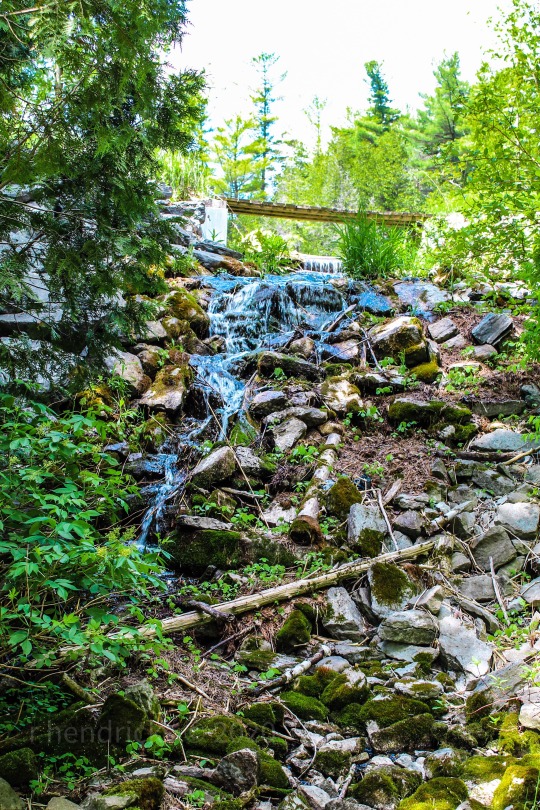
Duffin’s Creek Watershed
5 notes
·
View notes
Text
“At The Source”
“It emerges from the ground, mindless of timing or conditions. Fresh, spring water wells up from deep underground to begin its long journey to rejoin the sea.” – Ed Lehming
I have stood here many time before. It is the source of West Duffins Creek, a small local creek that flows from the Oak Ridges Moraine and empties into Lake Ontario, many kilometers south. It begins as a series of springs…

View On WordPress
0 notes
Photo

#Thingsiseewhenicycle @landoverlandings has the right message. Let me add "You can't grow enough food in a subdivision to support all the residents". The sprawl has to end ... this building growth is not sustainable. We can't bulldoze fields for houses and we can't keep clearing forests to farm. West Duffins Creek is a gem that is slowly being consumed by housing in the Seaton lands. Enjoy it now for it will soon be gone .. reduced to a culvert running underground. Another windy day for a commute to the office and run some errands. #iamspecialized #roubaix #myridemyrules #destinationroad #shimano #garmin #cyclelife #bellbikehelmets #capturaphoto #captura #pickering #durhamregion #ontario #canada #outdoors #churchoftheskinnytire #strava #stravaphoto #dressforsuccess #fromthepeloton #dressforsurvival #setyoursoulfree #getoutdoors #freshairwontkillyou #freshairsaveslives #getoutside #greatcyclechallenge #gcccanada (at Pickering, Ontario) https://www.instagram.com/p/CPbUoGqpC_g/?utm_medium=tumblr
#thingsiseewhenicycle#iamspecialized#roubaix#myridemyrules#destinationroad#shimano#garmin#cyclelife#bellbikehelmets#capturaphoto#captura#pickering#durhamregion#ontario#canada#outdoors#churchoftheskinnytire#strava#stravaphoto#dressforsuccess#fromthepeloton#dressforsurvival#setyoursoulfree#getoutdoors#freshairwontkillyou#freshairsaveslives#getoutside#greatcyclechallenge#gcccanada
0 notes
Link
The developers behind the controversial Durham Live project donated thousands to the Progressive Conservatives days before the government cleared the way for the project.
A warehouse connected to Durham Live, a casino complex proposed by developer Triple Group, is slated to be built on top of a protected cluster of marshes and swamps connected to the Duffins Creek watershed in Pickering, Ont. Though building on top of such wetlands is usually forbidden, the Ford government fast-tracked the project with a special zoning order in October, then introduced a bill Thursday that may nullify a lawsuit standing in the way and ordered the local conservation authority to give Triple Group a permit.
Triple Group is run by the billionaire Apostolopoulos family, which donated $15,000 to the Progressive Conservatives between 2018 and 2020. Brothers Jim, Peter and Steve Apostolopoulos each donated a further $1,600 to the party on Feb. 24, eight days before the government introduced the bill, the Ontario NDP pointed out Monday.
“Does the premier really think that Ontarians are that gullible, that there's no connection between the donations and what you are designing through legislation for developers, especially when his government bends over backwards to accommodate his big donors?” Ontario NDP finance critic Catherine Fife said in question period Monday. The speaker asked her to withdraw the comments.
Continue Reading.
Tagging: @politicsofcanada @onpoli
84 notes
·
View notes